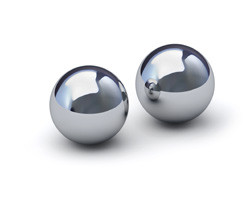Silver and Titanium nanoparticles in fish cell toxicity studies
The size and physical characteristics of NPs make endocytotic entry into the epithelia possible. As silver and titanium NPs are widely used and commercially available, it is important to study their potential toxicity. The project NANOTRAFFIC (Do small things lead to big problems? Mechanism of uptake and toxicity of metal nanoparticles in intestinal cells) performed such a toxicity study. Team members developed a polarised intestinal cell model based on the RTgutGC cell line from rainbow trout. In combination with the hepatic cell line, RTL-W1, this intestinal–hepatic cell culture system enabled evaluation of the transport across the intestinal epithelia, and measurement of the effects on the liver cells growing underneath. The chosen model allowed scientists to differentiate between the apical and basolateral membranes' uptake of the NPs in vitro. NANOTRAFFIC used citrate-coated ion-producing silver NPs (19 nm) and non-dissolving titanium dioxide NPs (21 and 25 nm). Cell viability was evaluated through metabolic activity and membrane and lysosome integrity. The cytotoxicity of both silver NPs and ions increased greatly in the media without amino acids and proteins. The NPs mostly affected lysosome integrity. NPs entered lysosomes directly, as visualised by scanning electron microscopy. While exposure to 1 micrometre of silver NPs for 24 hours was non-toxic to the RTgutGC cells, exposure to 10 micrometres resulted in a 15 % reduction in viability. On the contrary, while the cells internalised titanium dioxide NPs, these were accumulated in the endosomes and without measurable toxicity. The intracellular concentration of essential metals (copper, zinc and iron) was measured along with concentrations of exposure to metal (silver). Intracellular concentrations of essential metals elicited transcriptional and post-translational changes in cells upon exposure to metal NPs. While silver ions are known to be transported by copper transporter proteins, the project showed that silver NPs elicited a similar but attenuated response, including induction of metal chelating protein, metallothionein, and excretory processes, copper pump trafficking. The knowledge generated in this project supports environmental risk assessment with regard to metal NP exposure.







